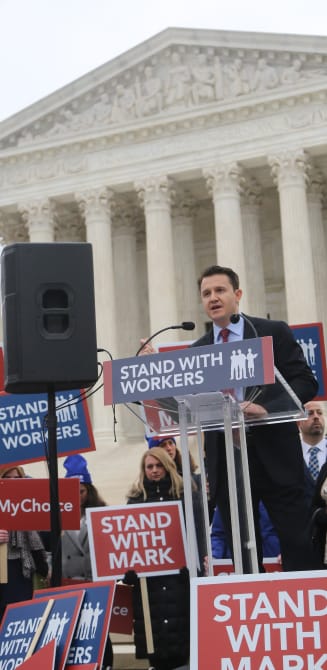August 13, 2019
By Matt Beienburg
Is there an education
program that can save money, increase student funding, and change lives for the
better? Yes, it’s called the Arizona Empowerment Scholarship Account (ESA)
program.
Out today, a new Goldwater Institute report, The Public School Benefits of Education Savings Accounts: The Impact of ESAs in Arizona, illustrates the ways that ESAs are good news for students and their families, taxpayers—and yes, even public schools:
- ESAs provide a customized education to high-need
students, giving them more opportunity
to succeed.
- ESAs save taxpayers
thousands of dollars per enrolled child.
- ESAs financially benefit K-12 public schools.
Known more informally
as education savings accounts, Arizona’s ESAs take part of what the state would
have spent covering the cost of a student’s education in a K-12 public school
and instead deposit that money into a personalized account that allows the
child’s family to use the funds for tutoring, educational therapies, private school
tuition, curriculum materials, and other teaching tools.
Today, the
program enrolls more than 800 children in Arizona whose parents serve on active
duty in the military or have fallen in the line of service, making them the
single largest group of ESA beneficiaries outside of special needs students.
And adding up the 3,700 special needs children and hundreds more from the
foster care system, Native American reservations, and failing schools—all of
whom also qualify for the program—ESAs served more than 6,400 students this
past year alone.
As explored in the
report, ESAs give these families an average of roughly $6,100 per child each year
(for non-special needs, non-kindergarten students) to help meet their
educational needs. In comparison, taxpayers spend more than $10,100 per public school pupil in Arizona,
meaning that on average, ESAs are generating thousands of dollars of taxpayer
savings for every child enrolled.
But it’s not just Arizona
families and taxpayers who benefit from ESAs. In a major twist, it turns out
that Arizona’s public schools also
reap financial benefits from the program. How is that possible? As the
report explains, ESAs increase per pupil
public school spending by redistributing state and federal dollars back to
remaining public school students each time a child opts out of public school
and into an ESA. From state sources alone, ESAs redirect over $600 per participant back to remaining public
school students for teacher pay and other operational uses.
Despite the fact
Arizona has increased total K-12 spending by over $5 billion over
the past two decades, many education advocates have long complained that
Arizona has failed its students because the state’s per pupil funding hasn’t gone up (since there are also so many more
students to educate). And per pupil funding, they say, is the metric that truly
matters. Fortunately, it turns out that ESAs help remedy precisely this issue,
increasing the amount of funding available to public schools per student
served.
Furthermore, in FY
2020, $3 million of ESA savings are being used to rebuild the Arizona Department
of Education’s IT system, which calculates the payments to every single public
school in the state, benefitting over 1.1 million public school students.
Moreover, while school districts have argued that special
needs students with severe disabilities have strained their budgets and forced
them to redirect funding from other students to meet federal regulations, ESAs
give more than 2,200 of these families each over $25,000 a year to better meet
their children’s unique needs without putting pressure on district budgets to
comply with federal rules. (And this amount is still less than what taxpayers
would spend sending the students to a public school.)
And contrary to claims that Arizona’s ESA program has led to widespread
fraud and misuse, it turns out that the colorful anecdotes of program
misspending account for a miniscule fraction of ESA transactions: As described
in the report, roughly 99 percent of ESA funds have been used appropriately. (In comparison, other government initiatives
like the National School Lunch program have been found to have improper payment
rates that are ten
times higher than the ESA program’s.)
While teachers unions
and political activists have painted ESAs as an apocalyptic threat to K-12
education, the evidence now suggests that their objections are rooted in
political ideology, rather than research. Indeed, the true contrast now falls
between 1) an ESA program that benefits students, taxpayers, and the education
system at large, and 2) union-backed political movements whose organizers
recently explicitly rejected student
learning as their priority in favor of aggressive political
platforms.
For Arizona families who are truly concerned about the quality of educational opportunity in Arizona, the choice between those two is clear. And as I write in the report, states looking to establish or improve their ESA programs should look to Arizona for key lessons in how such a program ought to work in order to benefit not just students, families, and taxpayers—but also public schools, too.
Read more about the positive differences ESAs are making in a new Goldwater Institute fact sheet.
Matt Beienburg is the Director of Education Policy at the Goldwater Institute. He is the author of the new Goldwater Institute report The Public School Benefits of Education Savings Accounts: The Impact of ESAs in Arizona.









